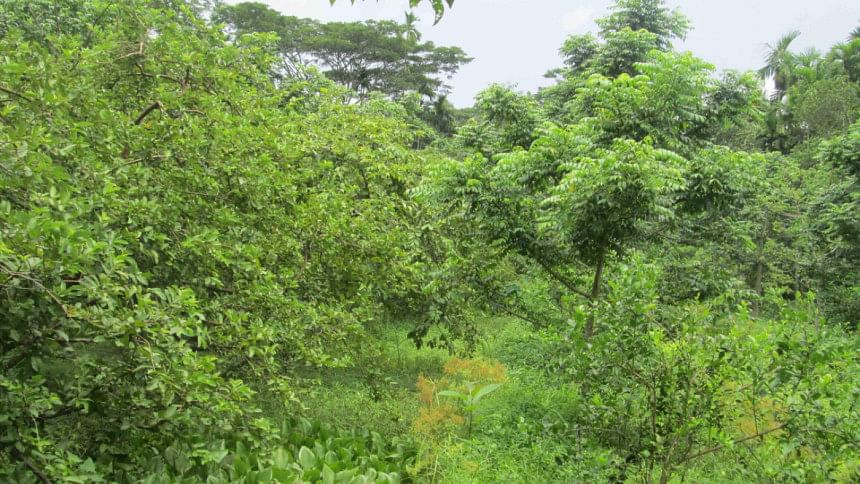Will Pirojpur's guava heritage stand the test of time?

Pirojpur's people are serious about guavas. Grown in the area for more than a century guavas are a part of Pirojpur's identity, so much so that there's even a tantalising tale about how the first guavas arrived. Yet despite the historical legacy, guava production at a practical level is becoming less enticing. Many orchardists are favouring the amra, the hog plum, which promises better profits.
It is said that around 125 years ago a man named Purno Mondal from Bhadranko village of Atgar Kuriyana union in Pirojpur's Nesarabad upazila set off on a pilgrimage to Gaya in Bihar, India.
Bodh Gaya is believed to be where Gautam Buddha attained enlightenment. For Buddhists, it's a well-established destination. Why Mondal, a Hindu, would go there isn't entirely clear; but in Pirojpur, it's well enough accepted that he did.
In Gaya, as people say, Mondal collected some guava seeds which, upon his return, he sowed in his household yard. For the first time, neighbours were able to taste the delectable fruit, and it proved popular. Gradually, other villagers established guava orchards, in adjacent villages, as far away as Jhalakathi.
In his honour, the local variety of guava is called the Purno Mondal guava, or alternatively, the Swarupkathi guava, immortalising the former name of Nesarabad.
The guava is, in actuality, native to Mexico and Central America, with guavas well-established on the islands of the Caribbean too.
The word 'guava' originates from the language of the Arawaks, an Amerindian people from the Caribbean. They called the guava tree 'guayabo', which became the Spanish 'guayaba' and spread from there in various forms to other old world languages.
Interestingly, the Bangla name for the fruit, 'peyara' also likely derives from Spanish or Portuguese. Derivatives of the Spanish and Portuguese word 'pera', meaning pear, as a name for guavas, are to be found in several languages in the Indian Ocean region.
But none of this means that there wasn't a man named Purno Mondal or that he didn't travel to Gaya.
Nor are history's details of any practical help to local orchardists who, for about the last five years, have faced guava losses.
"Once the orchard is established we don't have huge upkeep expenses," says one orchardist, Jaharlal Mondal, from Nesarabad's Kathurakathi village. "But it costs a lot to harvest. We have to pay Tk 450 per day to each labourer; and when the market price for guavas is so low it becomes a challenge."
Many growers agree. While guavas still fetch a decent price at the beginning of the season, by peak season the price tends to plummet. By then, 40 kilograms of the fruit, 1 maund, can sell for below Tk 50, which is unsustainable.
The situation leaves growers whose orchards according to the department of agriculture extension yet cover over 650 hectares in Nesarabad, dispirited. Indeed, with no way to preserve the fruit, guavas are sometimes left to rot on the tree.
"We faced losses from guava cultivation for the last several seasons," says Rabindranath Mondal from Kathurakathi. Like many, he is diverting efforts to hog plums.
"Our guava orchard brings losses every year," agrees orchardist Bimol Halder. "We have no choice but to grow a different fruit."
According to Nesarabad agriculture officer Md Rifat Sikder, there are already 152 hectares of hog plum orchard in the upazila, a figure that's increasing annually. Not only is the hog plum in high demand but unlike guavas they are longer lasting, staying fresh for over a week.
Yet despite low prices, the short shelf-life of guavas and increasing disease attack, attempts are being made to protect the tradition.
"We are trying to introduce Thai guavas as the variety has better longevity and attracts higher prices," says Sikder, "But many farmers are reticent. We also hope cold storage could be set up in the upazila to allow farmers leeway in waiting for prices to rise before selling their crop."
"We would like to save guava cultivation," he says, "because in Nesarabad, it's a century-old tradition."

 For all latest news, follow The Daily Star's Google News channel.
For all latest news, follow The Daily Star's Google News channel. 



Comments